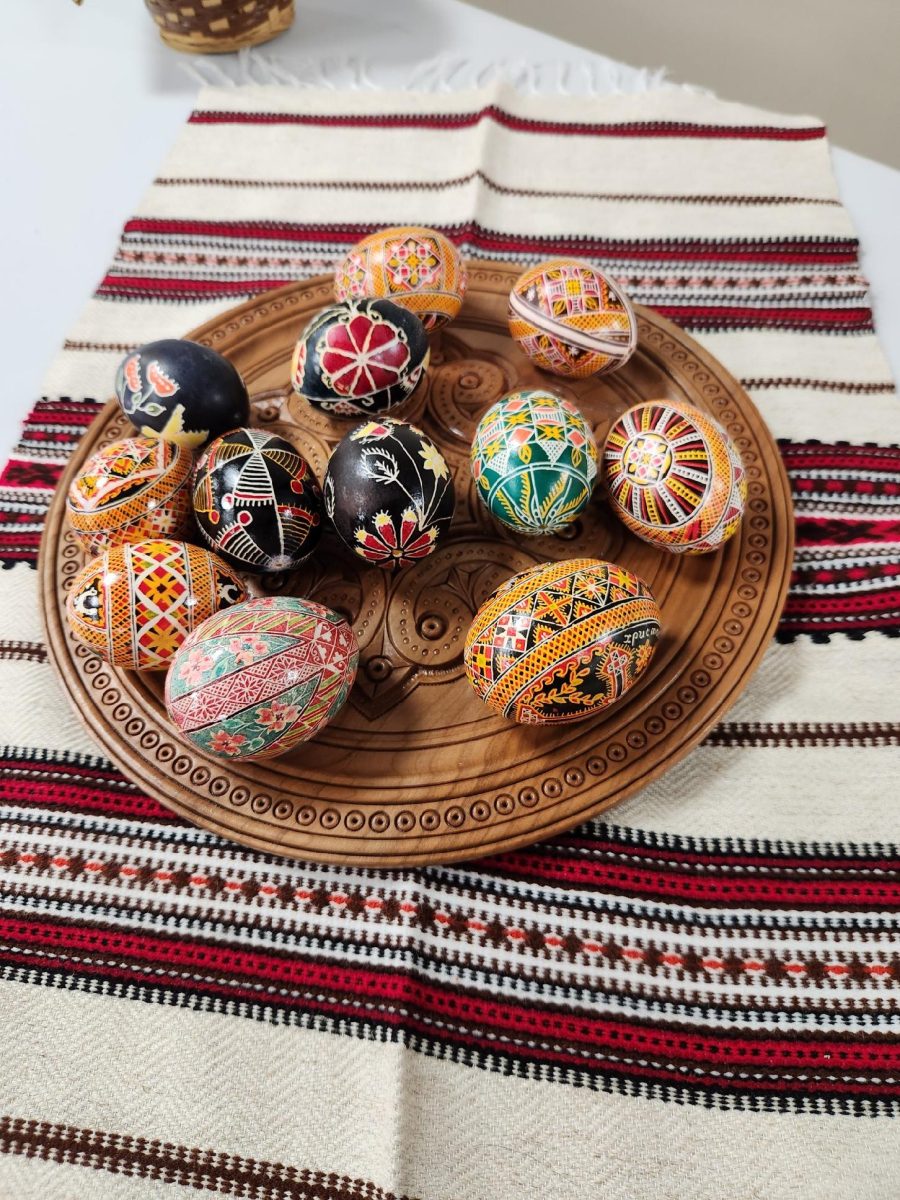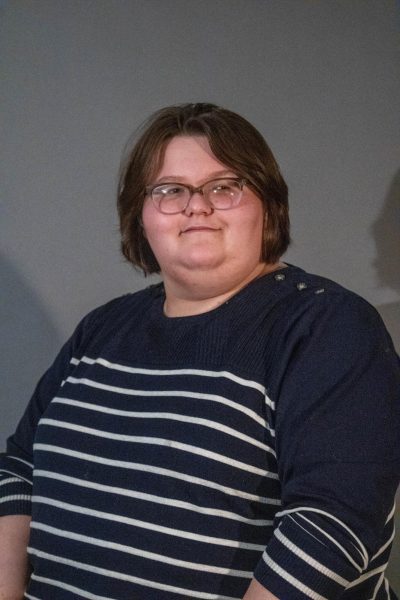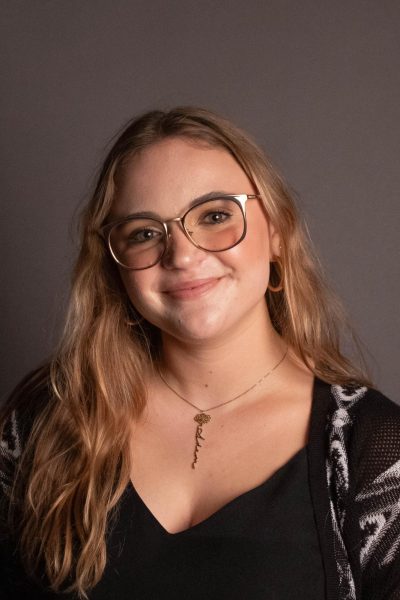When you think of egg painting, you may think of taking a paintbrush to an egg and continue to decorate it. But with Ukrainian Egg Painting, a paintbrush does not come out at all. The entire process is done with a flame, some wax, a kistka, and your choice of dyes.
The Cultural Café was held by International Student Services intended for students and the Winona community to share and learn about diverse cultures, featured Ukrainian Egg Painting at Central Lutheran Church this past Wednesday.
Ukrainian Egg Painting, or pysanky, is a traditional Ukrainian art form where eggs – typically ones that have been blown out and dried – are decorated for easter using wax, dye, and an instrument to control the wax called a kistka. When you heat up the metal tip of this pencil-like instrument, you can place it against a wax block to catch the then melted wax and use the wax to draw patterns onto an unblemished white egg.
That is only the first step. With your now white lines, you can then dip your egg into any number of dyes – this will be the color of your next set of patterns. This process repeats until you are left with an egg you are happy with, of which you dye it its final color and then return it to the flame you have been using to heat your kistka. Being careful not to burn your hands, you melt the lines of wax off the egg and are then left with a beautiful pysanky egg!
The common murmuring around the room turned from confusion to happiness under the guidance of Oresta Felts, the Director of International Student Services, and Vika, an international student from Ukraine this semester. The two of them held the event together, and Felts thought it was a “perfect time” to host the event, as Easter is right around the corner.
Felts is originally from Ukraine, and while she did not do the craft as a child, she says that her house has done it usually every year in recent years. Furthermore, she not only found it quite enjoyable to share the process, but she hoped that students would learn something new from the event.
Two students at the event, Kashmala and Sayeeda, shared Felts’ sense of fun from the event. While both shared that they loved the Ukrainian egg painting, and that it was something new for them, they had different troubles with learning the craft at first. For Sayeeda, it was easier because she has done henna (intricate patterns done on people’s skin, typically in Asia and SWANA) in the past, while Kashmala said it was hard from a lack of actual painting. That does not mean she did not enjoy it.
“The wax part – that was hard. But that was the fun of doing it with wax,” Kashmala said. So, while it may have had its challenges at first, it seems like Felts’ mission was accomplished: students not only learned something new and had fun while doing it, but also did something else.
“[Ukrainian egg painting] was just a fun thing to know and share the experience with my friends,” Sayeeda explained.
In times where animosity needlessly exists between people, it is an important thing to be able to share your culture with others and have them enjoy it.































